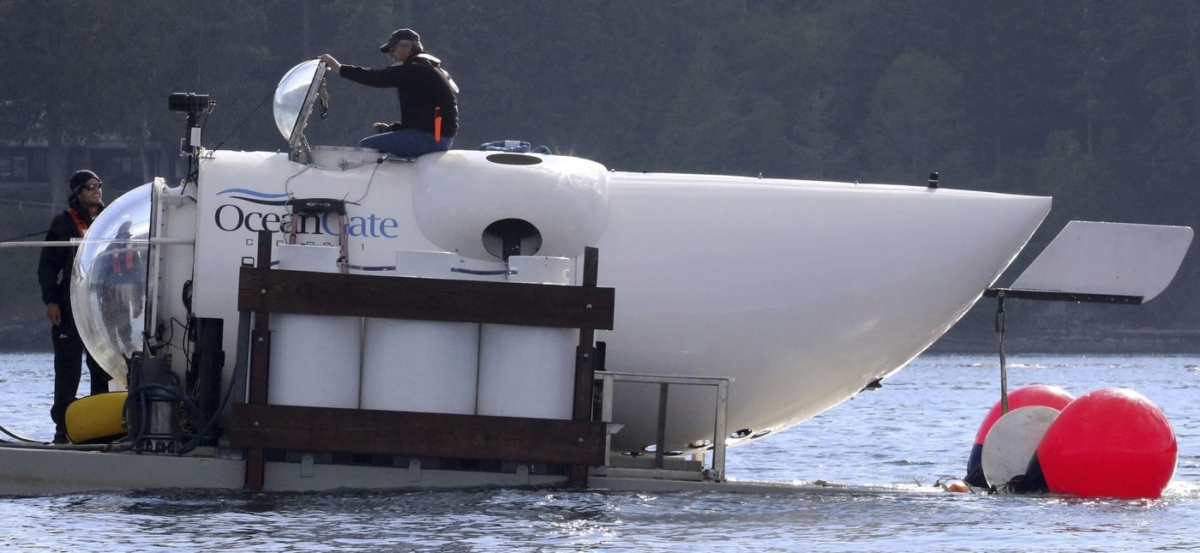PBS
A Canadian military surveillance aircraft detected underwater noises as a massive operation searched early Wednesday in a remote part of the North Atlantic for a submersible that vanished while taking five people down to the wreck of the Titanic.
A statement from the U.S. Coast Guard did not elaborate on what rescuers believed the noises could be, though it offered a glimmer of hope for those lost aboard the Titan as estimates suggest as little as a day’s worth of oxygen could be left if the vessel is still functioning.
Three vessels arrived on-scene Wednesday morning, including The John Cabot, which has side-scanning sonar capabilities and is conducting search patterns alongside two other vessels, the Skandi Vinland and the Atlantic Merlin, the Coast Guard tweeted.
Meanwhile, questions remain about how teams could reach the lost submersible, which could be as deep as about 12,500 feet (3,800 meters) below the surface near the watery tomb of the historic ocean liner. Newly uncovered allegations also suggest there had been significant warnings made about vessel safety during its development.
Lost aboard the vessel are pilot Stockton Rush, the CEO of the company leading the expedition. His passengers are a British adventurer, two members of a Pakistani business family and a Titanic expert.
The Coast Guard wrote on Twitter that a Canadian P-3 Orion had “detected underwater noises in the search area.” Searchers then moved an underwater robot to that area to search. However, those searches “have yielded negative results but continue.”
“The data from the P-3 aircraft has been shared with our U.S. Navy experts for further analysis which will be considered in future search plans,” the Coast Guard said.
The Coast Guard statement came after Rolling Stone, citing what it described as internal U.S. Department of Homeland Security emails on the search, said that teams heard “banging sounds in the area every 30 minutes.”
In underwater disasters, a crew unable to communicate with the surface relies on banging on their submersible’s hull to be detected by sonar. However, no official has publicly suggested that’s the case and noises underwater can come from a variety of sources.
Yet the reports have sparked hope in some, including Richard Garriott de Cayeux, the president of The Explorers Club. He wrote an open letter to his club’s adventurers, who include the missing British man and the Titanic expert aboard the Titan, that they had “much greater confidence” now after they spoke to officials in Congress, the U.S. military and the White House about the search.
Three C-17 transport planes from the U.S. military have been used to move commercial submersible and support equipment from Buffalo, New York, to St. John’s, Newfoundland, to aid in the search, a spokesperson for U.S. Air Mobility Command said.
The Canadian military said it provided a patrol aircraft and two surface ships, including one that specializes in dive medicine. It also dropped sonar buoys to listen for any sounds from the Titan.
Rescuers have been racing against the clock because even under the best of circumstances the vessel could run out of oxygen by Thursday morning.



